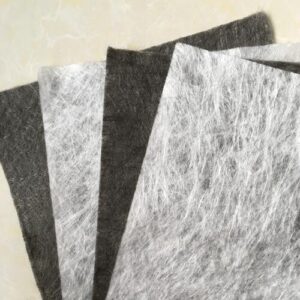Weather resistance of geotextiles
The weatherability of a geotextile refers to its ability to maintain its structural integrity and performance under varying climate and environmental conditions. Weathering resistance is one of the critical performance properties of geotextiles in a variety of civil engineering and land improvement applications. The following are the key factors that affect the weather resistance of geotextiles:
UV radiation resistance: Geotextiles are often used on outdoor projects where they are exposed to UV radiation in the sun. Therefore, it needs to have good UV radiation resistance to prevent UV decomposition and degradation of the geotextile. The quality of weather resistance is usually determined by the materials and additives of the geotextile.
Oxidation Resistance: Geotextiles need to be able to resist oxidation to avoid aging and degradation of the material. This is especially important for geotextiles that are exposed to air for long periods of time.
High temperature and low temperature resistance: Geotextile should have certain high temperature and low temperature resistance to adapt to various climate conditions. For high-temperature environments, geotextiles need to resist material softening and failure caused by high temperatures. For cold environments, geotextiles need to remain flexible to avoid embrittlement at low temperatures.
Chemical resistance: Geotextiles may be exposed to various chemicals, so they need to have certain chemical resistance to prevent chemical damage.
Mechanical damage resistance: Geotextiles are usually used in underground projects and need to have certain tensile and tear resistance to prevent structural damage caused by mechanical damage.
Water resistance: Geotextiles work in humid environments, so they need to have good water resistance to prevent moisture from affecting their performance.
Long-term performance stability: Weather resistance also involves the long-term service life of the geotextile. It should be able to maintain its performance over many years of use without premature aging or fatigue.
Biodegradability: Depending on application requirements, some geotextiles may need to be biodegradable to minimize environmental impact.
To select the right geotextile for a specific project, you need to consider the project’s climatic conditions, soil characteristics, and the geotextile’s materials and manufacturing process. Manufacturers often provide detailed information about the weathering properties of geotextiles to help engineers and designers make the best choice.

Chemical properties of geotextiles
Geotextile is an engineered material, typically made from synthetic polymers or natural fibers, with a variety of chemical properties that vary depending on the type of geotextile and its use. Here are some common chemical properties of geotextiles:
Chemically Inert: Most geotextiles are chemically inert, meaning they will not react with most chemicals. This is an important property of geotextile for its widespread use in a variety of environments, as it resists chemical corrosion and degradation.
Acid and alkali resistance: Geotextiles usually have some resistance to acids and alkali. This allows them to maintain stable performance when in contact with soil and water, independent of soil pH.
Salt resistance: When geotextiles are used in high-salinity environments such as coastlines and saline-alkali areas, they need to have good salt resistance to prevent salt damage.
Chemical Solvent Resistance: Geotextiles are generally resistant to common chemical solvents such as alcohol, petroleum products, and some organic solvents, so they remain stable when used in environments where these solvents are present.
Biodegradability: Some geotextiles may be designed to be biodegradable, meaning they can break down into harmless substances over a period of time. This property may be useful for some environmental projects or short-term applications.
Water resistance: Geotextiles often need to have some water resistance to ensure that their performance is not compromised in wet environments. This includes waterproof geotextiles and geotextiles used in submersible projects.
Resistant to mold and microbial growth: In humid environments, geotextiles need to resist the growth of mold and microorganisms to prevent biodegradation and deterioration.
Oil resistance: In an environment in contact with petroleum products, geotextiles need to have a certain degree of oil resistance to prevent oil pollution from damaging their performance.
Note that different types of geotextiles can have different chemical properties, depending on their composition and manufacturing process. Therefore, when selecting a geotextile, you need to consider the specific requirements and environmental conditions of your project and consult the manufacturer for detailed information on its chemical properties.


